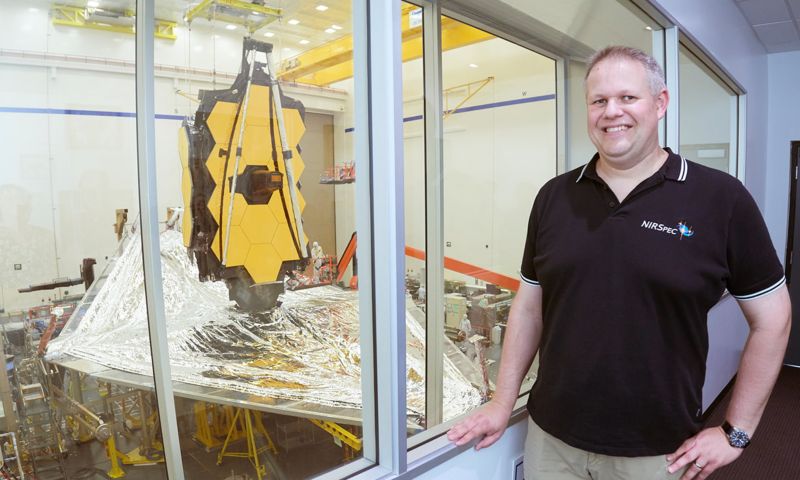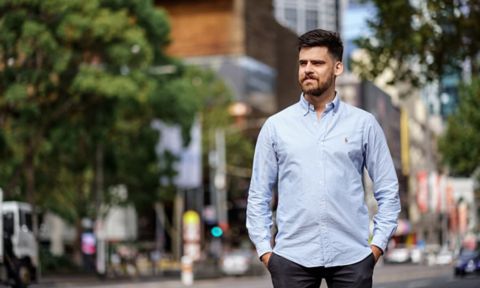Switching career paths an easy sidestep
Once he started studying aerospace, Marc never looked back.
He took part in the RMIT International Industry Experience and Research Program (RIIERP) and travelled to Germany to begin an internship with European aerospace company Airbus in 2004.
Thanks to his German-speaking parents and his ability to speak fluent German, Marc easily made himself at home. Today he continues to work for Airbus in Germany and is now head of the thermal products and analysis department.
“I work with an international team – Dutch, Austrian, Italians, Swiss, French. It makes it very interesting because people from different countries and experiences bring different ways of working into a system,” he said.
Opening a view to lightyears away
Marc is in charge of a specialised space instrument called a Near InfraRed Spectrograph or NIRSpec, which is used in collaboration with NASA, the European Space Agency and the Canadian Space Agency to power the James Webb Space Telescope.
The telescope generated incredibles images of the Cosmic Cliffs – a region roughly 7,600 light-years away – and made worldwide headlines in July.
After 17 years of working on the telescope, Marc said it was a watershed moment for him and his team.
“It was awesome,” he said.
“I had a small set up where I had about 10 guys who worked on the project sitting together and you could see there were a fair few people with tears welling up in their eyes.
“After all this time finally getting to see that all the hard work, over so many years, that was put into this telescope is now paying off with such fantastic pictures was and still is such an amazing feeling!”
Marc finished the bulk of his work on the NirSpec in 2013, but continued to test it every year thereafter.
He is now part of a team working on the JUpiter ICy moons Explorer, or JUICE – a spacecraft that will explore the three icy moons of Jupiter. Organised by the European Space Agency, the spacecraft will launch in August 2023 and arrive at Jupiter in 2031.
Why space research makes a difference
Marc said his work with space is always stimulating, but sometimes he does get questions from people outside the industry about whether it’s worth all the expense and effort.
“You see these pictures on television of these beautiful galaxies, but you sort of go, ‘Was that worth spending $10 billion on?’”
“There’s two parts to it and both make the world a better place. [The first is that] it inspires people and gives them hope and happiness.”
“The other side is a lot of the space technologies that are being developed and the processes behind them are used in our daily lives.”
“Navigation devices, mobile phones – there’s just so much stuff that you don’t realise that comes from the space industry.”
Industry experience opened the door
Marc said the Bachelor of Engineering (Honours) in Aerospace gave him the fundamental skills and knowledge he still uses to this day and credits the RIIERP with launching his space career.
“What I learned at RMIT with the degree was invaluable in my day-to-day engineering work, so how you work and the knowledge you learn,” he said.
“And the really important thing that RMIT did was open the door for me to get the job here through the RIIERP.”
If you’re an RMIT alumni and want to share your career experiences, let us know.
Story: Kate Jones
Please note, the RMIT International Industry Experience and Research Program (RIIERP) has been discontinued. However, similar programs remain available to students.



